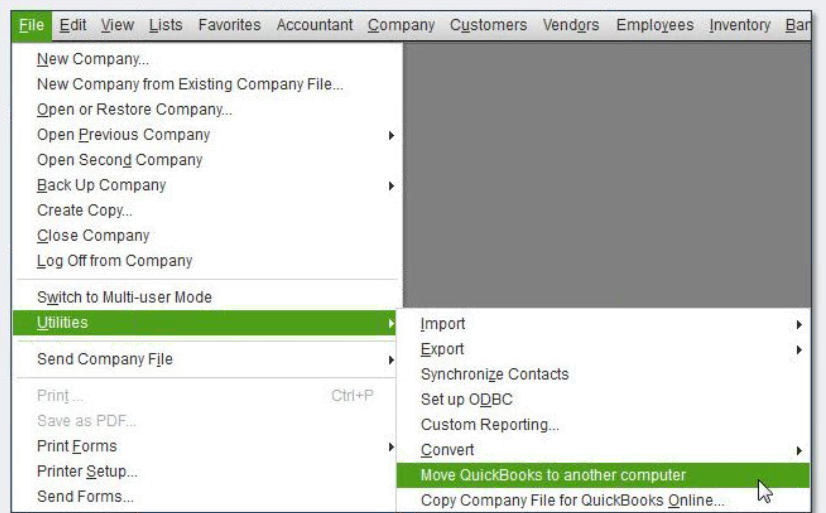by Zipbooks Admin
Startup vs. Small Business Part 2: Funding

In part 1 of the “Startup vs. Small Business” I addressed what may be the most important differentiator between a startup and a small business: growth. While I hope that post was useful, especially from a theoretical standpoint, I want this one to go more directly to where the rubber meets the road. What’s the difference between how a startup funds their business and how a small business might do so?
Startup
First off, in large part, the funding question goes back to growth. As noted in the last post, a startup needs to grow fast. In a startup, at least one of your goals is to create a large/valuable company (read: a valuation of 8-9 figures) in a highly competitive marketplace. This can’t be achieved without fast growth, because there will always be another company nipping at your heels, ready to pass you (or, in a market with strong network effects, make you irrelevant) the first moment you falter.
That fast growth, in turn, often leads to highly experienced and capable people joining your team, and those people can then lead to even faster growth. The ideal startup forms a virtuous cycle of sorts that starts by growing fast and ends with the startup serving a whole lot of customers and being worth a whole lot of money.
But that sounds like a chicken/egg problem. How do you start growing fast? In a startup, there’s almost always some “magic” in the answer to that question. The founders of a startup have got to be able to pull some type of rabbit out of their hat to get off the ground. That rabbit could be a beautiful product made with no resources; customers lining up, wallets out, despite your company being brand new; or a crazy-experienced team that anyone would want to bet on. But once you’ve done that, you will likely need real financial backing (eventually, on the order of millions of dollars).
A typical startup funding path might be like the following (caveat: almost nothing is ever really this clean):
- Founder(s) put in their own money (at the very least, in the form of opportunity cost) and build an initial product or gain some initial customers selling just their idea. (Again—sound hard? It is.) Sometimes founders will put together a “friends and family” round at this stage, pooling resources from people with whom they have close relationships and high trust. A startup might also participate in an accelerator or new business competition to help get this initial traction.
- The company goes to high-net-worth individuals (angel investors) who want to keep backing the idea in exchange for shares (a percentage ownership) in the new company. This gets you a bit further, allowing you to put together a more complete team, gain more usage or customers, and improve the product.
- The company goes to an institutional investor (a venture capital firm) to raise some serious cash (think $500k-$5M) and really start to move on the product and customer traction. This money will often be intended to help your company get to $1-5M+ in revenue (or much more if it’s not recurring or subscription revenue).
- Venture capital continues to support the company until it’s big enough to justify an initial public offering, when the company begins offering its shares to the general public and can raise very large amounts of money from investors in public markets.
This is oversimplified, but one important point here: I often see founders going straight to #3—they have an idea and start trying to line up meetings with VC’s. But usually, this doesn’t work. VC’s do an incredible amount of due diligence before funding a company, and at the idea stage, there’s usually too little information for them to be confident making an investment. There are no perfect companies, but generally, you have to really have something going for you before making it to that third step. What rabbit can you pull out of your hat?
I’ll also note that I didn’t address venture debt, a unique and still fairly uncommon type of security. Usually, startups are funded through equity financing—your investors will get a piece of the pie, with lots of terms and preferences.
Ok. So if startups often get funded through equity from founders, angels, and VC’s, how does a small business do so?
Small Business
Again, let’s go back to growth. Small businesses don’t necessarily need to grow fast (though they should certainly want to grow, as stagnation is one very small step from contraction). They often operate in less competitive markets, and don’t have the explicit goal of becoming huge company. Without the brutality of highly-funded competitors trying to eat your lunch day after day, small businesses often have the luxury of growing more slowly, even totally organically.
As an example, my second company, a design and development agency, never took any outside funding of any kind. In fact, it was profitable on day one—I charged a decent hourly rate for my services, some of which went to my salary and some of which stayed in the business. Over time, I used our profits to hire more people and turn it into a nice little business.
This worked for us, because the goal was never to become a huge company. We had competitors, of course, but often, we were the only serious bidders on a project. We weren’t in a race to create defensible intellectual property that would dramatically alter the dynamics of a market or create a new one entirely (which you’re often doing in a startup).
Here’s a handy gut check for the startup or small business question: imagine your company 10 years in the future, having grown entirely on its own profits. Is your company irrelevant? If so, it’s probably a startup. If not, it’s likely a small business.
That being said, small businesses do often need capital to get their feet under them. You may need to hire some help before you have the profits necessary to do so, or make payroll before you’ve been paid on a project. You may have to purchase inventory, equipment, or commit to retail space for some period of time. So how might you do that? Here are some common ways, in no particular order:
- Founders/your own job. Just like in a startup, it’s very common for founders to put in their own capital to get a small busines going. This could come from savings so you can go full-time right away, but it could also be surplus salary that you can use while you moonlight working on your business. If you have a strong 9-5 type job, you may not only have a little extra cash, but you may also have a few hours each day to dedicate to a project on the side. That flexibility can be invaluable in the early days.
- Friends and family. Also like in a startup, founders may be able to raise some money from friends and family who are willing to risk some of their assets. And while the friends and family method is fairly common, I’ve developed a strong personal bias against this type of financing. Business, as they say, is business. And things go wrong. I had a close family member provide some debt financing to my first business, and that hung over my head every day we hadn’t paid it back. While I am extremely grateful for the help we received, and while we were able to fully pay it back, it can be highly emotionally draining to worry—constantly—about something outside your control happening and failing to meet your obligations to a close friend or family member.
- A service component in your business. Many upfront costs come when you’re selling products (as opposed to services). Equipment or inventory purchases can precede revenue significantly. Services, on the other hand, can be profitable right away, with very little upfront expense required. Savvy entrepreneurs have a great opportunity to use a service side of the business to fund another more capital intensive portion.
- Angel investors. Though angels are more traditionally thought of as startup backers, it’s possible to raise money from a high net-worth individuals for a small business. Angels, because they’re investing their own money, have different incentives than VC’s and a very large exit might be less important to them. Some may be willing to structure their financing as debt as opposed to equity.
- Bank loans or other debt. There are—LITERALLY—a gazillion different types of small business lenders and debt products for small businesses. Ok, not quite—but there are a lot! Banks, government agencies, online lenders, credit card companies, and microcredit programs are all out there offering term loans, lines of credit, cards, cash advances, invoice financing, and much more (ZipBooks specializes in invoice financing). Small business debt is too huge and diverse a topic to cover in any detail here, but as a general rule, try not to take on “speculative” debt. That means when you take on debt, it should be clear you’ll have the cash flows necessary to cover future interest and principal payments. If it’s not, then you might want to try to grow more organically for a while longer first. If it is, then debt can be a very useful tool to cover capital expenditures and expenses that would otherwise be difficult to cover with just your business’s equity-driven cash.
Note one important omission in this list: venture capital. As a rule, venture capital simply does not fund small businesses. And that’s ok! VC’s simply need their companies to grow fast and achieve very large exits. Venture capital firms have their own investors (known as limited partners), who often demand 25%+ annual returns. Imagine the pressure a VC is under to make that hurdle, compounding year after year, especially given that some non-negligible portion of their portfolio is likely going to be worth $0! That’s why most VC’s only bet on companies that can grow quickly and become really big.
And if your company is more of a small business, that’s ok! Venture capital comes with many, many obligations—and as noted, it’s not the only way to fund your business. If you have a small business or an idea for one, my advice is to not waste your time and sanity beating your head against the wall trying to raise VC money. Your time is better spent elsewhere.
The huge upside is that in most of these types of small business financing, you’re not giving up that “piece of the pie” that you would with VC’s. And that’s great! Small businesses can lead to great lifestyles for their owners who, in the case where they maintain majority (or even 100%) ownership in their business, can pay themselves as much as they want, work when they want to, and build something on their own terms.
As a final note, just remember, not all businesses are created equal, but that doesn’t mean one type is “better” than the other. The market your business competes in, its potential for growth, and perhaps most importantly, your own goals with your business—will dictate the type of funding you should go after.





